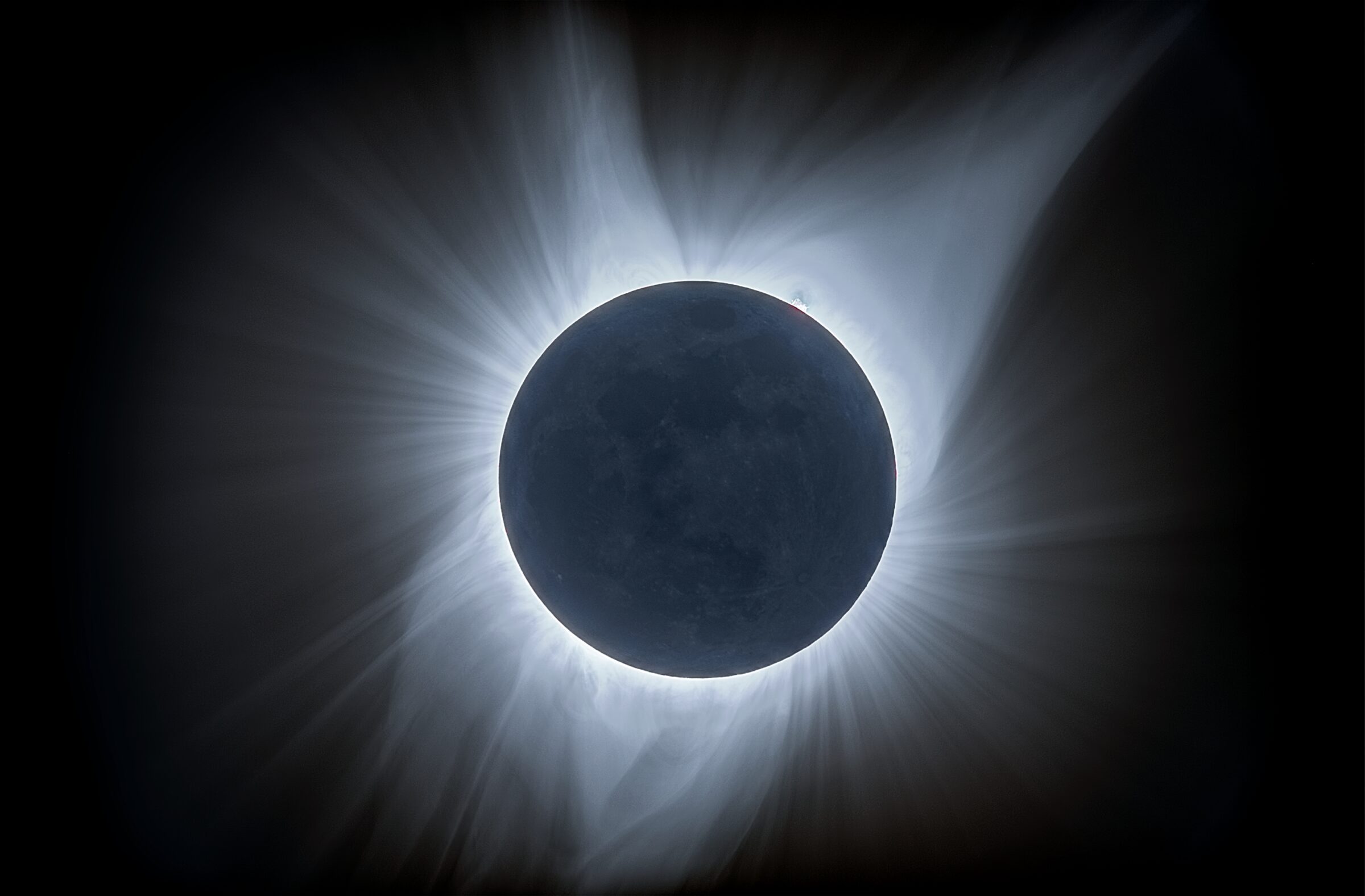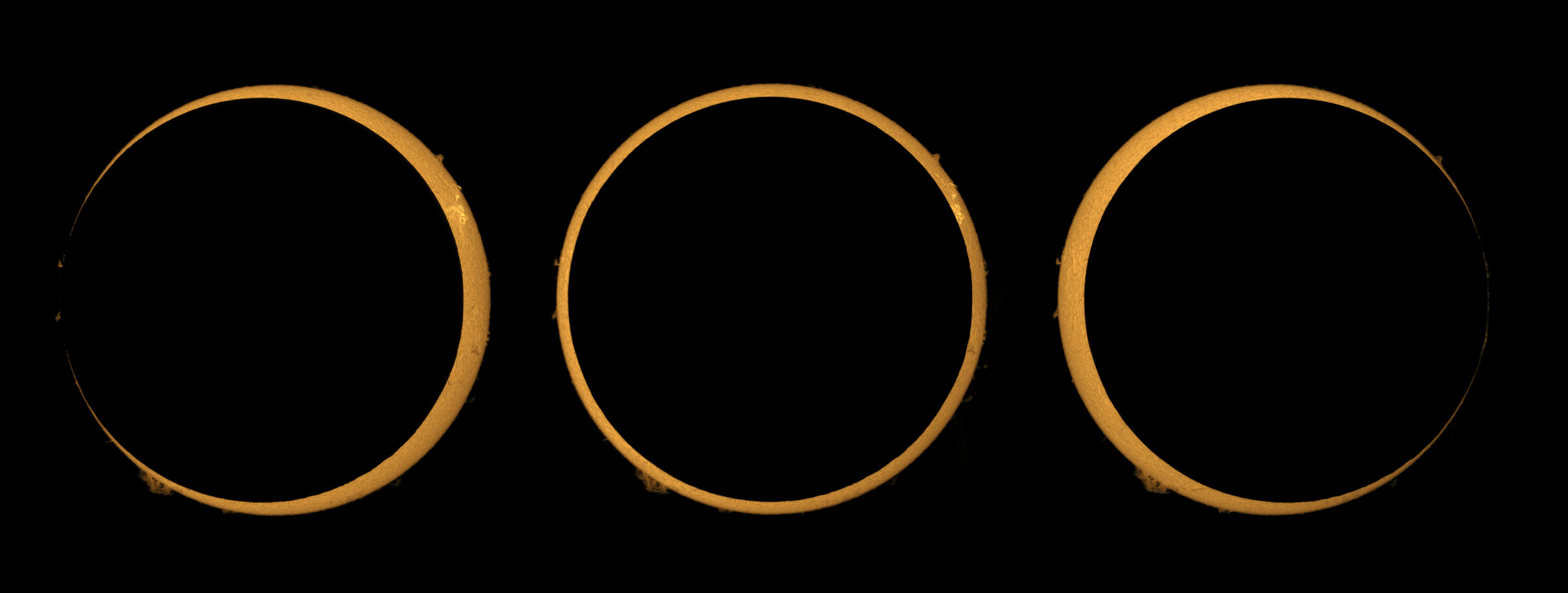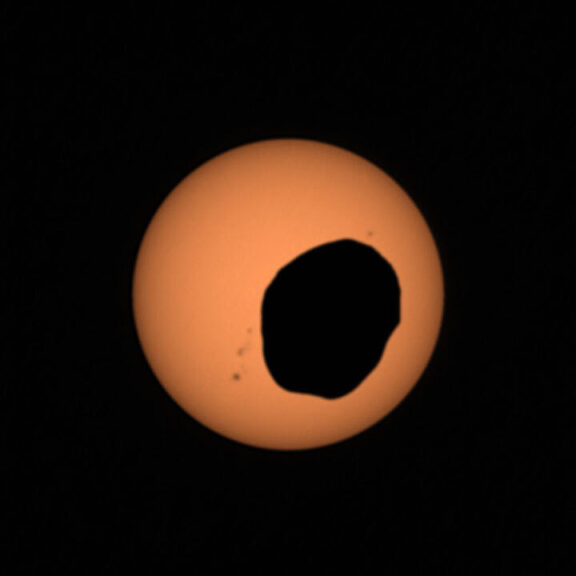An exquisite cosmic coincidence
Total solar eclipses are easy to appreciate. For as long as our historical records go back, we know that humans have marveled at them. Many cultures developed mythological explanations for eclipses, believing that only gods could blot out the Sun. Some ancient cultures developed sophisticated astronomical systems that could explain and actually predict eclipses. Today, we understand the motions of celestial objects so well that we can predict the exact minute a solar eclipse will begin at any given location. But the depth of our understanding of the Cosmos doesn’t lessen our appreciation of eclipses. In many ways, it enhances it.
Although syzygy (the alignment of celestial objects, like Earth, the Sun, and the Moon) is a completely normal thing in the Solar System, the way it creates eclipses on Earth is unique. This has to do with a wonderful coincidence of size and distance. The Sun is 400 times larger in diameter than the Moon, and the Sun also happens to be 400 times farther away from Earth than the Moon (most of the time — more on that later). This makes it so that both objects appear to be the same size from the perspective of Earth (in most locations — more on that later too). When syzygy occurs, the Moon can perfectly cover the Sun’s face.

Although other planets with moons experience syzygy with the Sun, none also have this coincidence of apparent size. On Mars, for example, syzygy between the planet, its largest moon (Phobos), and the Sun produces a transit, not an eclipse; Phobos is very small, so it just passes in front of the Sun without obscuring it completely.
From the vantage point of the outer planets, like Jupiter or Neptune, the Sun is so distant that syzygy with any large moons would more than obscure the Sun. Only on Earth do we get the perfect eclipse that lets us look at the Sun’s corona (the wispy tendrils of its outer atmosphere) and even see prominences (loops of plasma extending from its surface) while its bright light is blocked by the Moon.

Annular eclipses demonstrate just how perfect the size-distance ratio has to be to produce a total solar eclipse. The Moon’s orbit around Earth is elliptical, meaning it comes closer to Earth at certain points in this orbit and farther at others. The difference between the two extremes is about 40,000 kilometers (about 25,000 miles), which creates a change of about 14% in the Moon’s apparent size from Earth.
When syzygy coincides with apogee (the point in the Moon’s orbit when it’s farthest from Earth), the Moon doesn’t completely cover the Sun. Instead, a ring of sunlight remains visible around the edges, which is why an annular eclipse is often referred to as a “ring of fire” eclipse.
Locations closer to the poles, such as the Arctic and Antarctic regions, see annular eclipses more often than locations closer to the equator because the Moon is slightly farther away from Earth’s poles than from its equatorial regions, making its apparent size in the sky slightly smaller.

Even 150 million kilometers (93 million miles) away from the Sun, these small changes in location and lunar distance are enough to make a big difference. In locations experiencing an annular solar eclipse, enough sunlight reaches Earth that people might not even realize that an eclipse is happening unless they have solar eclipse glasses to look at the Sun and see the “ring of fire.”
Learning about how rare and coincidental our planet’s experience of solar eclipses is when compared to other worlds really drives home just how special this celestial phenomenon is. If you get a chance to witness a total solar eclipse in your lifetime, let this be another layer to your enjoyment of the experience.
Support our core enterprises
Your support powers our mission to explore worlds, find life, and defend Earth. You make all the difference when you make a gift. Give today!
DonateThe Planetary Report • March Equinox
Help advance space science and exploration! Become a member of The Planetary Society and you'll receive the full PDF and print versions of The Planetary Report.


 Explore Worlds
Explore Worlds Find Life
Find Life Defend Earth
Defend Earth


